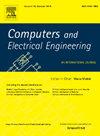Hybrid medical image encryption with compression framework for Internet of Medical Things
IF 4
3区 计算机科学
Q1 COMPUTER SCIENCE, HARDWARE & ARCHITECTURE
引用次数: 0
Abstract
Patient medical data’s security, storage, and transmission are critical challenges in healthcare systems, especially in the Internet of Medical Things (IoMT) environments. The vulnerability to attacks, higher computational costs, and loss of diagnostic quality are most often failures of the conventional encryption methods due to an imbalance between security and imperceptibility. This work focuses on developing a hybrid medical image encryption and compression (HMIEC) framework that uniquely integrates encryption, compression, and watermarking to address these issues. Initially, Improved Henon Chaotic Map Encryption (IHCME) was applied on the source image, which provides higher security. Then, the preprocessing operation is performed on the cover image, which converts the color space of the cover image. Further, the Discrete Karhunen–Loève Transform (DKLT) is applied to preprocessed and encrypted images. Moreover, a naturally inspired gray wolf optimization (GWO) algorithm selects the optimal embedding coefficients. Further, medical image embedding is performed using a GWO-based optimal embedding strength factor, where the preprocessed image hides the encrypted image and generates a watermarked image. Finally, a post-processing operation is performed on the watermarked image to generate a smoother watermarked image. The proposed HMIEC system resulted in improved peak signal-to-noise ratio (PSNR) by 77.04 dB, entropy of 41.923, mean square error (MSE) of 0.001283, structural similarity index metric (SSIM) of 0.991, normalizer correlation coefficient (NCC) of 0.992, compression ratio (CR) of 21.955%, the unified average change in intensity (UACI) of 99.60%, and the number of pixels change rate (NPCR) of 33.46% as compared to existing watermarking and security systems.
基于医疗物联网压缩框架的混合医学图像加密
患者医疗数据的安全性、存储和传输是医疗保健系统中的关键挑战,特别是在医疗物联网(IoMT)环境中。由于安全性和不可感知性之间的不平衡,传统加密方法最常见的缺点是易受攻击、计算成本较高、诊断质量下降。这项工作的重点是开发一个混合医学图像加密和压缩(HMIEC)框架,该框架独特地集成了加密、压缩和水印来解决这些问题。最初,对源图像采用改进Henon混沌映射加密(IHCME),提供更高的安全性。然后,对封面图像进行预处理操作,对封面图像的色彩空间进行转换。进一步,将离散karhunen - lo变换(DKLT)应用于预处理和加密后的图像。此外,自然启发的灰狼优化算法(GWO)选择最优嵌入系数。此外,使用基于gwo的最优嵌入强度因子进行医学图像嵌入,其中预处理图像隐藏加密图像并生成带水印的图像。最后,对水印图像进行后处理,得到更平滑的水印图像。与现有的水印和安全系统相比,该系统的峰值信噪比(PSNR)提高77.04 dB,熵提高41.923,均方误差(MSE)提高0.001283,结构相似度指标(SSIM)提高0.991,归一化相关系数(NCC)提高0.992,压缩比(CR)提高21.955%,统一平均强度变化(UACI)提高99.60%,像素个数变化率(NPCR)提高33.46%。
本文章由计算机程序翻译,如有差异,请以英文原文为准。
求助全文
约1分钟内获得全文
求助全文
来源期刊

Computers & Electrical Engineering
工程技术-工程:电子与电气
CiteScore
9.20
自引率
7.00%
发文量
661
审稿时长
47 days
期刊介绍:
The impact of computers has nowhere been more revolutionary than in electrical engineering. The design, analysis, and operation of electrical and electronic systems are now dominated by computers, a transformation that has been motivated by the natural ease of interface between computers and electrical systems, and the promise of spectacular improvements in speed and efficiency.
Published since 1973, Computers & Electrical Engineering provides rapid publication of topical research into the integration of computer technology and computational techniques with electrical and electronic systems. The journal publishes papers featuring novel implementations of computers and computational techniques in areas like signal and image processing, high-performance computing, parallel processing, and communications. Special attention will be paid to papers describing innovative architectures, algorithms, and software tools.
 求助内容:
求助内容: 应助结果提醒方式:
应助结果提醒方式:


